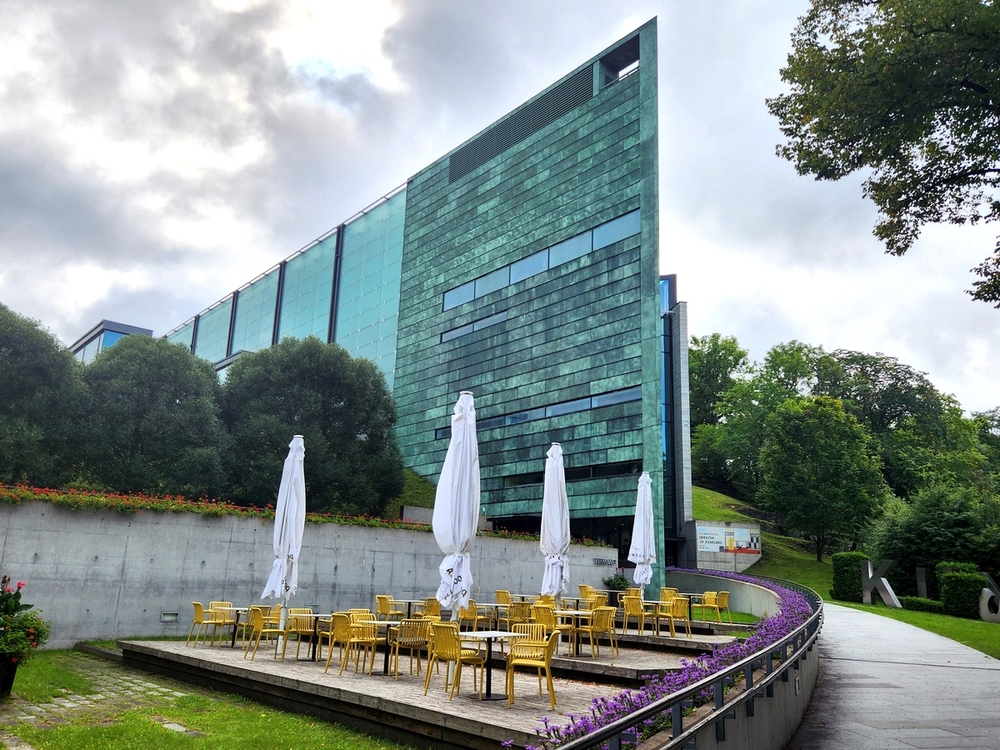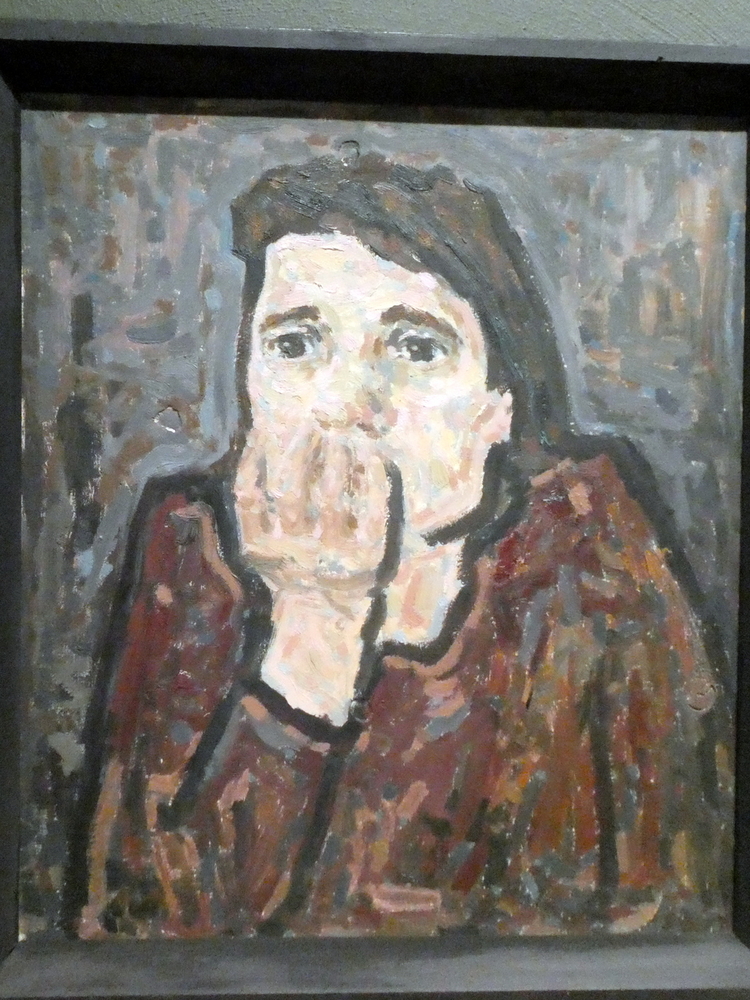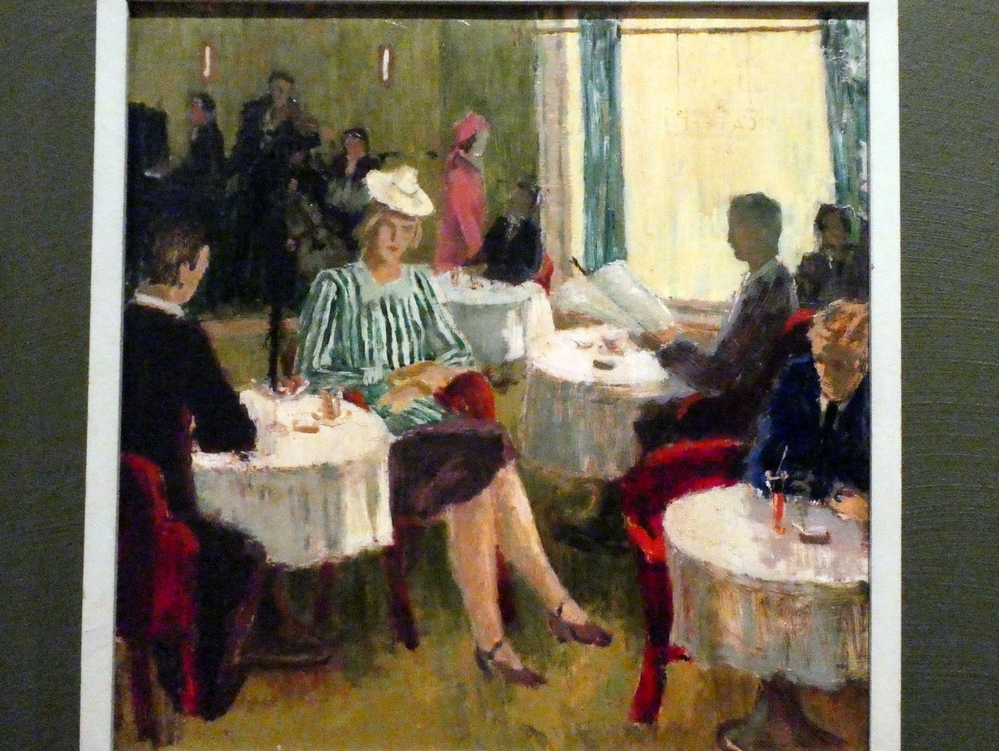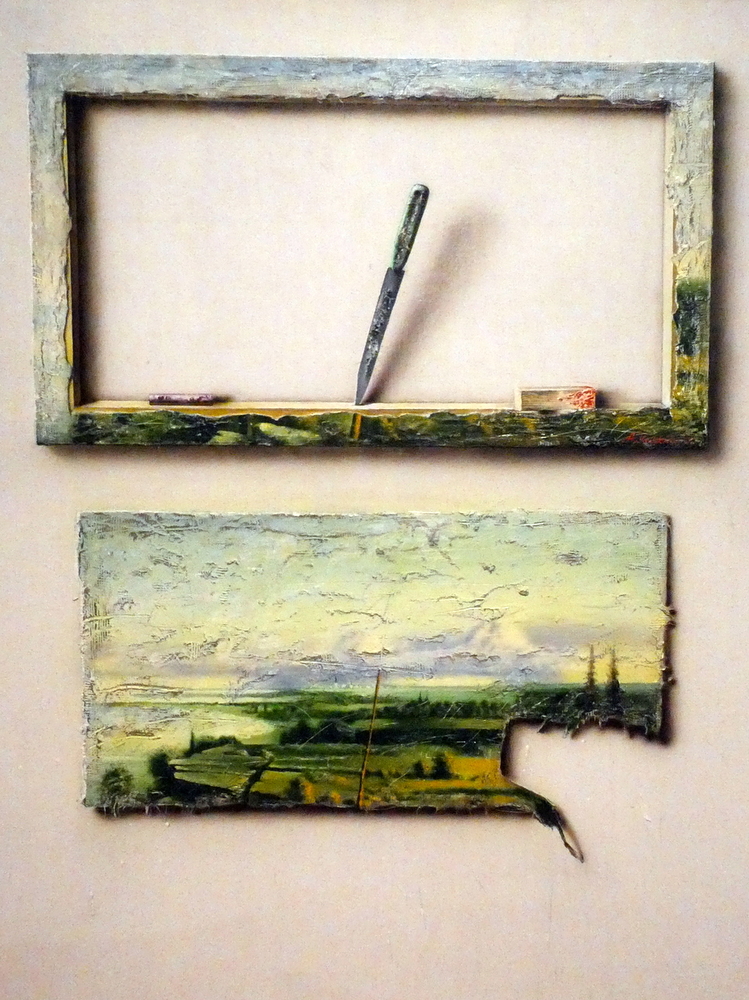Seagull is an installation of 83 portrait heads in a room with sound effects
Art may be international, with people from all over familiar with the ‘big names’ whose work is in museums world-wide, but one of the pleasures of travel is the chance to visit museums well-stocked with the work of artists whose work is less known outside their homelands.

I first became fascinated because it offered an opportunity to answer the question “What were artists here doing while France dominated Western art in the 19th century? How were artists from here affected by studying in France?”

Beyond that, visiting these museums is often like visiting a history museum, with the chance to see how artists responded to, and in many cases took part in movements for social and cultural change.

So, how could I not go to KuMu, Tallinn’s museum for Estonian art from the 18th century to now? It’s a branch of the Art Museum of Estonia (Eesti KUnstiMUuseum, hence the name), in a splendid building nestled into a hillside in Kadriorg Park, which also is home to the presidential palace and several other museums.

There’s a timeline of events, artistic and otherwise, to help with understanding of the museum’s varied collections and their entangled strands. Over much of the period up to the early 20th century, Estonia’s urban culture was dominated by Baltic Germans; the rise of Estonian-speaking culture and art came late.
Many of the painters of the era were influenced by travels and studies in Italy, and by art schools in Germany, especially Dusseldorf. Works like Eduard von Gebhardt’s Sermon on the Mount, above, placed peasants in ‘national costume’ in well-known scenes.

With the abolition of serfdom in Estonia by 1819, the newly-emerging class of free peasants became characters for painters such as Oskar Hoffmann, who painted teachers, farmers, judges, landowners and more, including the one above.

Another instance of growing Estonian national consciousness is the number of works representing Linda, mother of the mythical hero Kalevipoeg. For Estonians, she came to have a status similar to the female personifications of Mother Russia or the French Marianne. Above, Linda carries a stone across the landscape; in the drawing below, Kalevipoeg rests from his battles.

In the 20th century, Estonia became independent after World War I, and its artists became even more engaged with a variety of European art movements, as can be seen in the selection of paintings below: Music (1919) and Constructive Composition (1925) by Ado Vabbe, who studied in Paris.
Post-impressionist and post-pointillist could describe this View over Tallinn Towards the Harbor (1919) by Herbert Lukk. Other styles became popular in the ‘Roaring 20s,’ heavily influenced by trends in other countries. Two examples: Bathers (1926) by Kuno Veeber, Sunday (1924) by Felix Randel
Deeper into the 20s and moving toward the 30s, we also see a darker view of the world, mirroring turbulent times and economic tough times, perhaps. Jaan Vahtra’s apprehensive 1923 self-portrait seems an omen of coming times. Below that, Aida Street by Peet Aren, Mart Laarmen’s view of Tallinn’s port and Houses and Towers by Aleksander Krims.
Which is not to say that other styles and subjects completely disappear such as this pleasant domestic scene of an upper-class home.

But more of the paintings on display reflect the conditions and struggles of working people. Passengers (1929) by Eduard Ole; In a Kitchen (1935) by Andrus Johani and Ole’s Street Tramps, a low-angle street scene that shows city dwellers of different classes intersecting on a corner.
World War II and its aftermath brought big changes to art in Estonia. At the beginning of the war, Estonia was occupied first by the Soviet Union and then by Germany, and then again by Soviet troops; after the war it became a Soviet republic.

During the war, some painters, like Richard Uutmaa, turned to rural scenes of work; Rye Harvesters (1941) (above) was part of a triptych of agricultural workers. Others, such as Endel Koks, turned to escapist scenes that ignored wartime conditions entirely. Incidentally, Koks also painted wartime scenes commissioned by Germany. Those have not survived and Koks spent the post-war years in exile.
While Koks sided with Germany, a group of left-leaning Estonian artists were gathered in Yaroslavl, Russia to form a National Cultural Ensemble to work collectively on art and propaganda. Edvard Olkas painted himself and others in the group at work in their studio.

Olkas’s painting Rifle Corps of the Estonian Guard in Tallinn 22 September 1944 shows guardsmen and residents in traditional clothing on the day the Red Army drove German forces out of the city.

The postwar era marked a return to peace, but also an adjustment to life as a Soviet republic rather than an independent country. It was also an era of turmoil because of conflicting wartime loyalties, and conflicting attitudes toward being part of the Soviet Union.


Some artists, like Olga Terri, painted despairing scenes during the period; for a time she was expelled from the artists’ union for her work, but later returned. Above right, Grievers, painted in 1945, and at left, Fear (1949), with a hand over mouth perhaps to show fear of speaking out.



Art showing the positive side of life was more widely accepted and was encouraged by government bodies and by the union of artists, seen meeting just above in a painting by Elmar Kits from 1947. The painting of Young Aircraft Modelers is a 1951 work by Ants Viidalepp.
Some paintings of the era show major historical events and themes much in the same way one can find pictures of Napoleon and his generals (don’t be too quick to dismiss something as propaganda just because it’s not regal!), while others give the same serious weight to more mundane but possibly equally important events. Here’s a pair for that point. Estonian Red Army Soldiers with Lenin and Stalin is a 1952 collaboration between Elmar Kits and Evald Okas, while Tractor Drivers Taking up the Challenge of Socialist Competition was painted in 1951 by Viktor Karrus and Roman Treumann.
Styles didn’t stand still during the Soviet years; New Town (above) was painted by Evald Okas in 1965 in a style quite different from his earlier work seen above.


Doing Voluntary Work on Saturdays Washing Shop Windows (1980) by Jaan Elken has left me wondering: the subject matter speaks to official themes of the time, but I feel as if I’m witnessing visual irony. Elken is still active, but most of his post 1990 paintings are largely abstract often incorporating graffiti-like text. In contrast to Elken’s painting, Rein Tammik’s 1983 Market is almost photo-realistic.
Here’s a pair of paintings that are alike in depicting masses of people in motion, but quite different in style and content. After Work (1941) by Johannes Greenberg and Demonstration (1965) by Henn Roode.
Three interesting and unusual pieces: Kaarel Kurismaa’s 1975 Sound Dripping Device, Ando Keskkula’s 1982 Landscape with a Knife and Travelers sculpted by Tamara Ditman in 1985

After a long morning trekking through the museum, I was ready to sit and rest a while, but sadly, these comfortable chairs are not for the public, although sculptor Villu Jaanisoo often creates works that invite public participation. He’s known for large-scale humorous works using common materials, in this case car tires.











































































